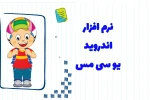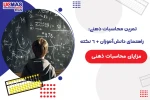What is the Soroban Abacus? | Japanese Abacus and Its Uses

How can a small and simple tool simplify complex mathematical calculations? Why do the Japanese sometimes turn to a traditional device to teach their children mathematics? You might think that in today’s advanced world, there’s no need for old methods like the abacus, but the story is more fascinating than that. The soroban abacus is not just an ordinary calculation tool; it is also recognized as a part of Japanese culture and a method for mental development. Join us as we delve deeper into the structure, usage, and astonishing applications of this device.
The Soroban Abacus and Japanese Culture
Japan is renowned for its innovation, technology, and unique approaches to education and culture. However, alongside these advancements, they also preserve their traditional roots. The soroban abacus is one example of this blend of tradition and progress. When you visit some Japanese elementary schools, you might see children eagerly practicing with this abacus.
- Is the Japanese abacus really useful?
You may wonder why, despite calculators and numerous applications, they still practice with the abacus? Surprisingly, studies conducted in Japan reveal that using the soroban improves children’s mental capabilities and calculation speed while enhancing their focus.
What is the Japanese Abacus (Soroban)?
To answer the question what is the soroban abacus, we can look at its brief history in Japan. This tool was originally inspired by ancient Chinese abacuses (suanpan). Before the expansion of digital technologies, the abacus was common in many Eastern civilizations. Merchants and traders used it for everyday calculations, sales, and even tax computations. Later, the Japanese made a few creative modifications to develop a refined and efficient model known as the soroban.
Initially, sorobans were wooden, featuring round and solid beads. The Japanese designed these beads to glide smoothly, enabling users to perform calculations quickly. These enhancements gradually made the soroban incredibly popular and the primary calculation tool across Japan.
Differences Between Soroban and Chinese Abacus
The Chinese abacus (suanpan) has more rows and a different number of beads in each row. However, the soroban’s structure is more compact. The most common soroban has one bead at the top (referred to as the heaven bead) and four beads at the bottom (referred to as the earth beads). This simplicity makes it quicker to learn and less tiring for the user.
- Configuration: The suanpan typically has two beads on top and five on the bottom, while the soroban has one bead on top and four on the bottom.
- Calculation method: The Chinese abacus requires more complex rules for number conversion, whereas the soroban has simpler rules.
- Speed: Some believe that the soroban is faster for heavy calculations because it involves fewer movable beads.
Parts of the Soroban Abacus
Every soroban is composed of several main parts that form the foundation of its usage. These parts include:
Overall Structure and Rows of Beads
- Rods: Each abacus typically has several vertical rods on which the beads slide.
- Beads: As mentioned, there is one bead at the top, called the "heaven bead," which represents the value of 5. Below it are four beads, each with a value of 1.
- Divider Beam: The central bar or divider separates the upper (heaven) section from the lower (earth) section. Usually, a small groove runs through the middle of this bar to facilitate bead movement.
Materials Used in Soroban Manufacturing
In the past, most Japanese abacuses were made from fine woods such as cedar or maple. Even today, high-quality all-wooden models can still be found on the market. However, lighter and cheaper plastic models are also available, making them ideal for schools or home practice.
Why Is the Soroban's Design Special?
If you’ve noticed, the parts of the soroban exhibit a unique simplicity. This simplicity facilitates faster learning and greater efficiency. The human mind is less distracted by unnecessary bead positions, allowing for calculations of large numbers without switching tools. It’s similar to a basic digital watch that focuses solely on time without extra buttons to distract you.
How to Use the Soroban Abacus?
How do you use the soroban abacus? At first glance, it might seem a bit confusing, but once you become familiar with the basic rules, you’ll find it surprisingly simple and enjoyable.
Holding and Starting Calculations
- Holding the abacus: Usually, you hold the left side of the abacus with your left hand and move the beads with the thumb and forefinger of your right hand. If you’re left-handed, you can reverse this arrangement.
- Resetting to zero: At the start, all the top beads should be pushed away from the central bar, and the bottom beads should be pushed downward. In this state, the abacus is set to zero.
- Single-digit numbers: Each vertical rod represents a digit. The top bead has a value of 5. When you move the top bead toward the central bar, you add 5. Each bottom bead has a value of 1. For example, to display the number 7, move the top bead (5) and two bottom beads (2) toward the central bar.
Examples of Addition and Subtraction
Suppose you want to calculate 7+5 using the soroban:
- Display the number 7 on the first vertical rod (5 + 2).
- To add 5, move the top bead on the next rod toward the central bar.
- The result is displayed directly on the abacus: the number 12.
Or for subtracting 3 from 8 on one rod:
- First, display the number 8 (5 + 3).
- To subtract 3, move those three bottom beads away from the central bar.
- Only the top bead (5) remains on the rod, representing the number 5.
Applications of the Soroban Abacus
Now that we know how to use the soroban abacus, you might wonder what its applications are and why it has gained so much attention.
- Enhancing Children’s Focus: Many parents look for ways to improve their children’s focus and mental capabilities. In Japanese schools, children are encouraged to learn the soroban from an early age to increase their calculation speed. Over time, their mental skills in addition, subtraction, multiplication, and division improve significantly.
- Teaching Mental Math: In many Asian countries, programs using soroban emphasize mental math skills. Trainers believe this challenging yet engaging tool activates the brain’s neural pathways, strengthening number visualization and analytical skills.
- Boosting Cognitive Abilities: Soroban practice strengthens active memory and problem-solving skills. The mental images of bead positions enhance brain development by forming new neural connections.
- Adaptability for All Ages: Interestingly, there’s no specific age limit to learn the soroban. Adults can also benefit from it for mental sharpness. Some educational centers even use it with older individuals to prevent cognitive decline.
Improving Mental Abilities Through Soroban
Have you ever tried engaging your mind with mental calculations? It can be exhausting at first. The good news is that the soroban abacus, as a physical tool, helps you grasp numbers better initially. Over time, you can visualize and manipulate beads in your mind for calculations.
- Step-by-step Learning: Start by working with the physical abacus. Gradually, using it will become second nature, and your mental math skills will also improve.
- Building Confidence: Regular practice with the soroban boosts calculation confidence, encouraging individuals to perform better with constant motivation.
- Brain Development: Researchers agree that tasks requiring focus, coordination, and multi-factor processing are highly beneficial for the brain. The soroban offers exactly this challenge.
Soroban vs. Digital Tools
While smartphones and laptops are convenient, can digital calculators offer the mental benefits of the soroban? Soroban emphasizes:
- Learning Speed: Unlike digital tools that provide just the final result, the soroban teaches the entire calculation process, accelerating the understanding of basic math concepts.
- Active Memory Training: Digital tools eliminate the need to remember intermediate steps, whereas soroban actively engages memory at every stage.
- The Joy of Physical Interaction: Many find the tactile experience of moving beads enjoyable, making the learning process more engaging.
While calculators are fast and error-free, the soroban remains unmatched for mental development and deep learning.
Final Thoughts
The soroban abacus, rooted in history, integrates seamlessly with modern educational programs like UCMAS to bridge tradition and technology. Its simplicity opens the door to effective and fast learning, showing how ancient tools can solve today’s challenges.

 The Android UCMAS application (UCMAS Game App) + Features
The Android UCMAS application (UCMAS Game App) + Features
 What is Abacus? History, Types & Modern uses | UCMAS
What is Abacus? History, Types & Modern uses | UCMAS
 Mental Arithmetic Tests
Mental Arithmetic Tests
 Mental Arithmetic Practice
Mental Arithmetic Practice
 How to Solve Different Radicals with Various Indices on a Calculator
How to Solve Different Radicals with Various Indices on a Calculator






There are no comments yet!
Leave a comment